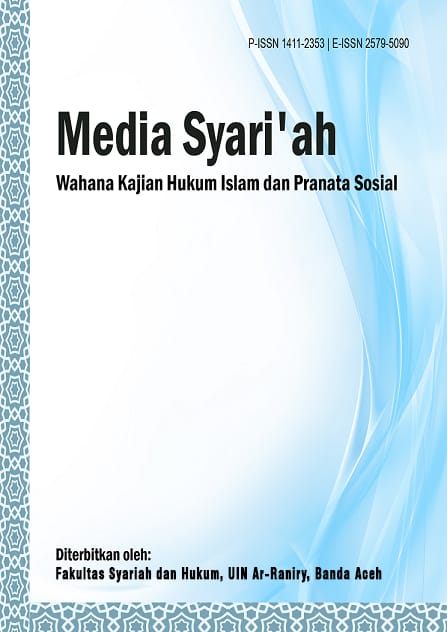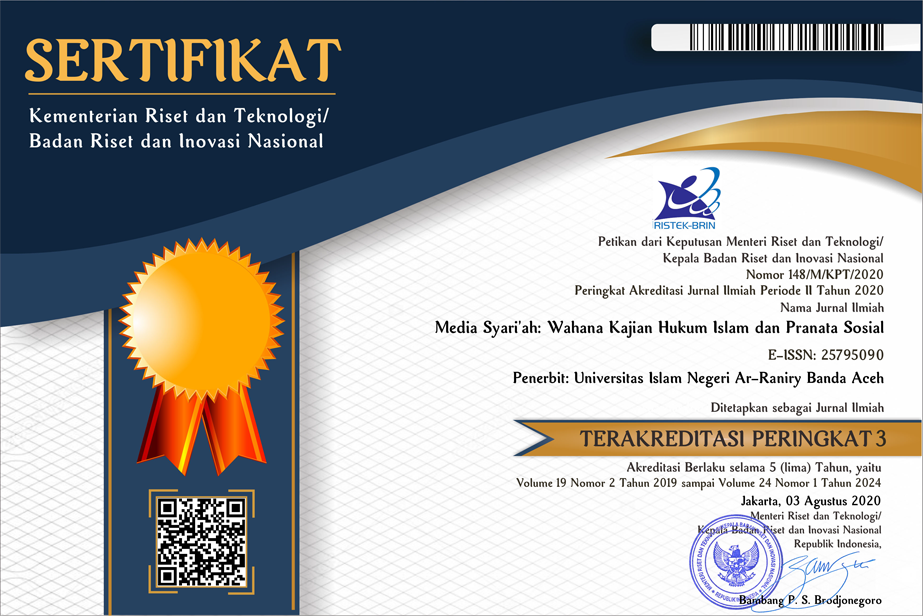Penyelesaian Tindak Pidana Persetubuhan yang Dilakukan oleh Anak Terhadap Anak: Studi di Pengadilan Negeri Takengon
DOI:
https://doi.org/10.22373/jms.v21i1.5244Keywords:
Anak, Tindak Pidana Persetubuhan, PerlindunganAbstract
Abstrak: Tulisan ini bertujuan menganalisis penyelesaian tindak pidana persetubuhan yang dilakukan oleh anak terhadap anak dan perlindungan hukum terhadap anak sebagai pelaku dan korban tindak pidana persetubuhan. Metode penelitian ini dilakukan dengan metode yuridis normatif dan yuridis empiris. Hasil penelitian terhadap penyelesaian tindak pidana persetubuhan yang dilakukan oleh anak terhadap anak dalam wilayah hukum Pengadilan Negeri Takengon dilakukan penyelesaian melalui proses pengadilan karena tindak pidana tersebut tidak dapat dilakukan penyelesaian melalui diversi, sebab ancaman pidana terhadap tindak pidana persetubuhan terhadap anak di atas 7 (tujuh) tahun. Pedampingan kepada anak sebagai pelaku tindak pidana maka pihak BAPAS berperan aktif dalam melakukan penelitian terhadap riwayat kehidupan anak yang melakukan tindak pidana persetubuhan, sehingga menjadi satu pertimbangan penyidik dalam proses penyidikan dan menjadi satu pertimbangan hakim dalam memutuskan hukuman terhadap anak dengan mengedepankan perlindungan hukum bagi anak.
Abstract: This paper aims to analyze the settlement of the act of intercourse committed by children against children and the legal protection of children as perpetrators and victims of the act of intercourse. The research method was carried out with normative and empirical juridical methods. The results of research on the settlement of the sexual offense committed by a child against a child within the jurisdiction of the Takengon District Court is carried out through the court process because the criminal act cannot be resolved through diversion, because the criminal threat against the sexual offense against a child over 7 (seven) year. Assistance to children as perpetrators of crime, the BAPAS plays an active role in conducting research on the life history of children who commit criminal acts of intercourse, so that it becomes a consideration of investigators in the investigation process and becomes a consideration of judges in deciding sentences against children by prioritizing legal protection for children.
References
Alam, A. S., & Purwati, A. (2016). Diversi Sebagai Wujud Kebijakan Pemidanaan dalam Sistem Peradilan Pidana Anak di Indonesia. Journal de Jure, 7(2), 181.
Analiyansyah, & Rahmatillah, S. (2015). Perlindungan Terhadap Anak yang Berhadapan dengan Hukum (Studi Terhadap Undang-undang Peradilan Anak Indonesia dan Peradilan Adat Aceh). Gender Equality: Internasional Journal of Child and Gender Studies, 1(1), 51–68.
Ananta, A. W. W. P. (2016). Darurat Kejahatan Seksual. Jakarta: Sinar Grafika.
Clifford, B. A., & Arief, B. N. (2018). Implementasi Ide Restorative Justice ke Dalam Ketentuan Perundang-undangan Anak di Indonesia. Hukum Dan Masyarakat Madani, 8(1), 2017.
Daly, K. (2017). Restorative Justice: The Real Story. Restorative Justice, 85–109.
Dewata, A. W., Sularto, R. B., Indraswati, T. L., Studi, P., Ilmu, S., Hukum, F., & Diponegoro, U. (2016). Diversi Sebagai Aktualisasi Konsep Restorative Justice dalam Sistem Penegakan Hukum (Studi Penanganan Tindak Pidana Oleh Anak di Wilayah Pengadilan Negeri Semarang). Diponegoro Law Review, 5(11), 1–11.
Gultom, M. (1989). Masalah Perlindungan Anak. Jakarta: Akademi Pressindo.
Meyrina, S. A. (2017). Restorative Justice dalam Peradilan Anak Berdasarkan Undang-Undang No.11 Tahun 2012. Jurnal Penelitian Hukum De Jure.
Pravitria, A. A. (2018). Anak Yang Berkonflik dengan Hukum Yang Melakukan Pemerkosaan Terhadap Anak. Media Iuris, 1(3), 401.
Sholikhati, Y., & Herdiana, I. (2015). Anak Berkonflik dengan Hukum (ABH), Tanggung Jawab Orang Tua atau Negara ? Psychology Forum UMM, 23, 978–979.
Siahaan, G. (2018). Orang Tua, Sekolah dan Kemajuan Teknologi Infomasi dan Komunikasi Terhadap Perkembangan Anak. Jurnal Teknodik.
Sosiawan, U. M. (2016). Perspektif Restoratif Justice Sebagai Wujud perlindungan Anak yang Berhadapan dengan Hukum. Jurnal Penelitian Hukum De Jure.
Downloads
Published
Issue
Section
License
MEDIA SYARI'AH: Wahana Kajian Hukum Islam dan Pranata Sosial has CC-BY-SA or an equivalent license as the optimal license for the publication, distribution, use, and reuse of scholarly work. Authors who publish with this journal agree to the following terms:
1. Authors retain copyright and grant the journal right of first publication with the work simultaneously licensed under a Creative Commons Attribution-ShareAlike 4.0 International License that allows others to share the work with an acknowledgment of the work's authorship and initial publication in this journal.
2. Authors are able to enter into separate, additional contractual arrangements for the non-exclusive distribution of the journal's published version of the work (e.g., post it to an institutional repository or publish it in a book), with an acknowledgment of its initial publication in this journal.
3. Authors are permitted and encouraged to post their work online (e.g., in institutional repositories or on their website) prior to and during the submission process, as it can lead to productive exchanges, as well as earlier and greater citation of published work (See The Effect of Open Access).
You are free to:
Share — copy and redistribute the material in any medium or format.
Adapt — remix, transform, and build upon the material for any purpose, even commercially.
The licensor cannot revoke these freedoms as long as you follow the license terms.
All papers published in MEDIA SYARI'AH: Wahana Kajian Hukum Islam dan Pranata Sosial are licensed under a Creative Commons Attribution-ShareAlike 4.0 International License.




.png)


.png)
.png)
.png)



